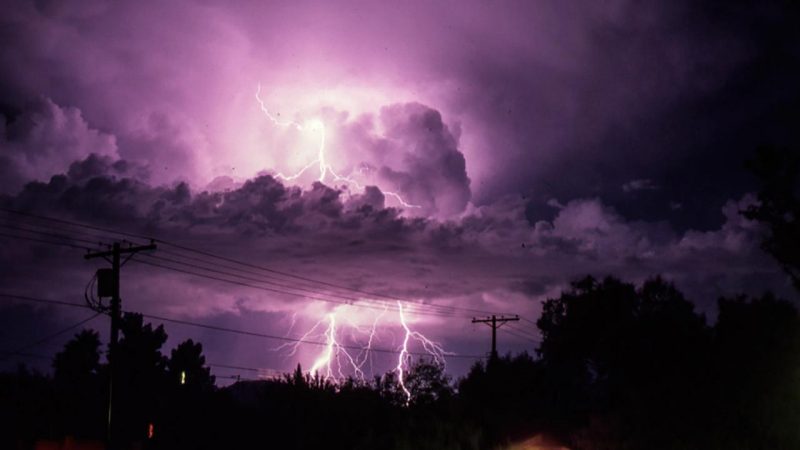
The cyclone may have passed, and the flood water may have receded, but monsoon is still upon us. Lightning streaked skies will not be an uncommon phenomenon, so it’s best if we islanders take precautions.
Just this month, a seventeen year old boy died due to electrocution by lightning. The number of lives lost annually (both human and animals) has surpassed 50, in Sri Lanka alone. In 2012, lightning was responsible for 22 deaths while 33 deaths were reported in 2010, and 19 in 2013. Extensive usage of electronic devices and electrical gadgets, coupled with ignorance on the part of citizens, have contributed to these accidents and tragic deaths. It is a cause for concern especially during this time of the year, with the arrival of the south west monsoon season, famous in the tropics for its sour weather and sudden thunder bolts.
Even Sri Lanka’s very own World Heritage site, Sigiriya, hasn’t escaped the wrath of this phenomenon. In 2012, a severe blow dealt by lightning had crumbled a 10 ft wide portion of the wall at the base of the rock, close to the famous Lion’s Paw.
Do’s And Don’ts During Lightning

During thunderstorms, it’s always best to avoid wide open areas. Image credit: universetoday.org
(In other words: How Not To Get Electrocuted For Dummies)
During a thunderstorm, avoid standing too close to metal structures, metal framings and wirings such as windows, no matter how much you love staring in awe at the sky.
If on an important phone call, it’s safest to use the cell phone instead of the landline, as any electrical equipment, especially a plugged-in landline that is still attached to a power supply, has a higher risk of conducting the electrical shock in comparison to other wireless devices.
Do not decide to go on an impulsive swim or wade in puddles of water, however tempting it may seem. The primary factor at play as to why it is easier to get shocked when water is involved is that water, being a liquid, spreads over the surface, and into the nooks and crannies, of your skin much better than contact with a solid would, thus increasing the surface exposure of your skin to the electric shock.
Do switch off all electrical appliances and electronics; unplug for double assurance, especially the electronics that tend to have cables and antennae such as tv and radios.
It is highly recommended to wear rubber slippers or rubber footwear since rubber is a bad conductor of electricity. Those Bata flip flops could actually be a life-saver.
Although this may seem too extreme, avoid touching or handling electrical equipment or gadgets such as fridges, radios, electric kettles, electric irons and personal computers.

Flip flops are a great favourite among islanders, but they make for more than just funky beach wear; during a thunderstorm, these are probably the best things to have on your feet. Image credit zazzle.com
Avoid standing in vast open areas such as playgrounds, open car parks or paddy fields. Do not work or hold metal objects, such as a metal torch, hammers, or metal based rods, during periods of lightning. Do not stand under solitary objects like lonely trees or singular metal towers.
Avoid driving or hitching a ride on open vehicles, that have no roofing and less protection.
In case you are caught outdoors or in expansive areas when the weather decides to turn sour, grab a plastic sheet and wrap yourself around in it and make sure you crouch down with your feet placed closely together.
For cyclists, it’s best not to take your bicycle out for a ride, as the metal framework would definitely be an instant attraction for lightning.
What To Do When Someone Is Struck By Lightning
As lightning has a strong dosage of electricity, the shock of it could be detrimental, most often leading to instant death.When a living being is struck by lightning, the type of first aid administered could help save a life. A few steps are listed as follows:
A person struck by lightning is highly likely to suffer from a cardiac arrest, so administering immediate and instant resuscitation should provide a good chance for survival.
Ensure that you are not at risk from ongoing lightning. Do wait until immediate danger has passed or move to a safer place before touching the patient.
Be assured that a person struck by lightning is safe to touch, as the body does not retain any electrical charge and instant CPR must be performed. Do not remove burned clothing unless necessary.
Lay the victim down and place the head slightly lower than the torso or legs. After immediate first aid, do rush the patient to an emergency ward nearby, so that a quick assessment could be done on neurological and external injuries caused, and further treatment could be performed if necessary.
Although all this may sound alarming, there’s no reason to panic every time the sky lights up during a thunderstorm ‒ it’s just always best to take precautions whenever possible, so till the weather subsides and the angry whiplashes of a glorious monsoon decides to halt, dig into your flip-flops and hold on to your steaming cuppa!
Featured image credit sciencemag.org

.png?w=600)






